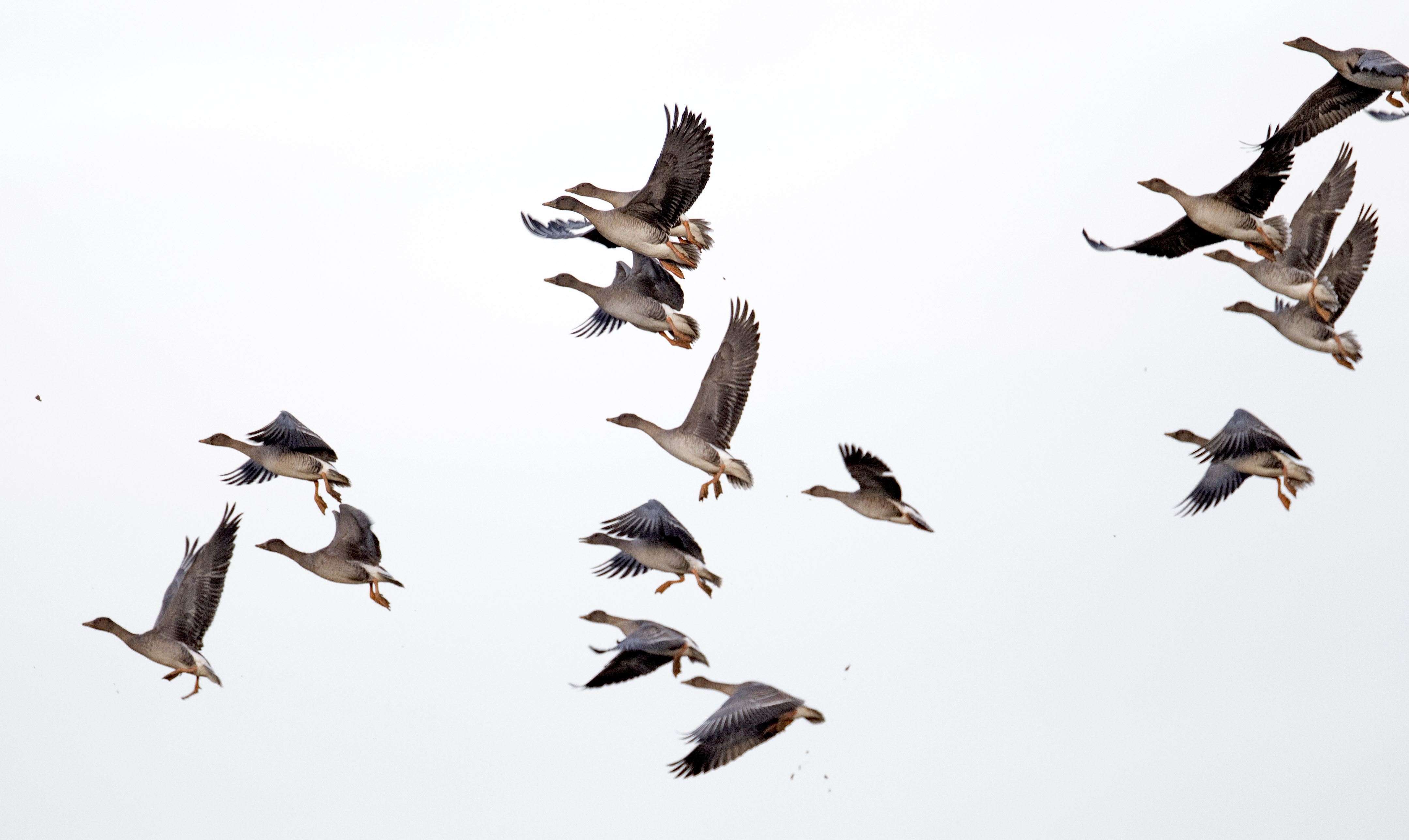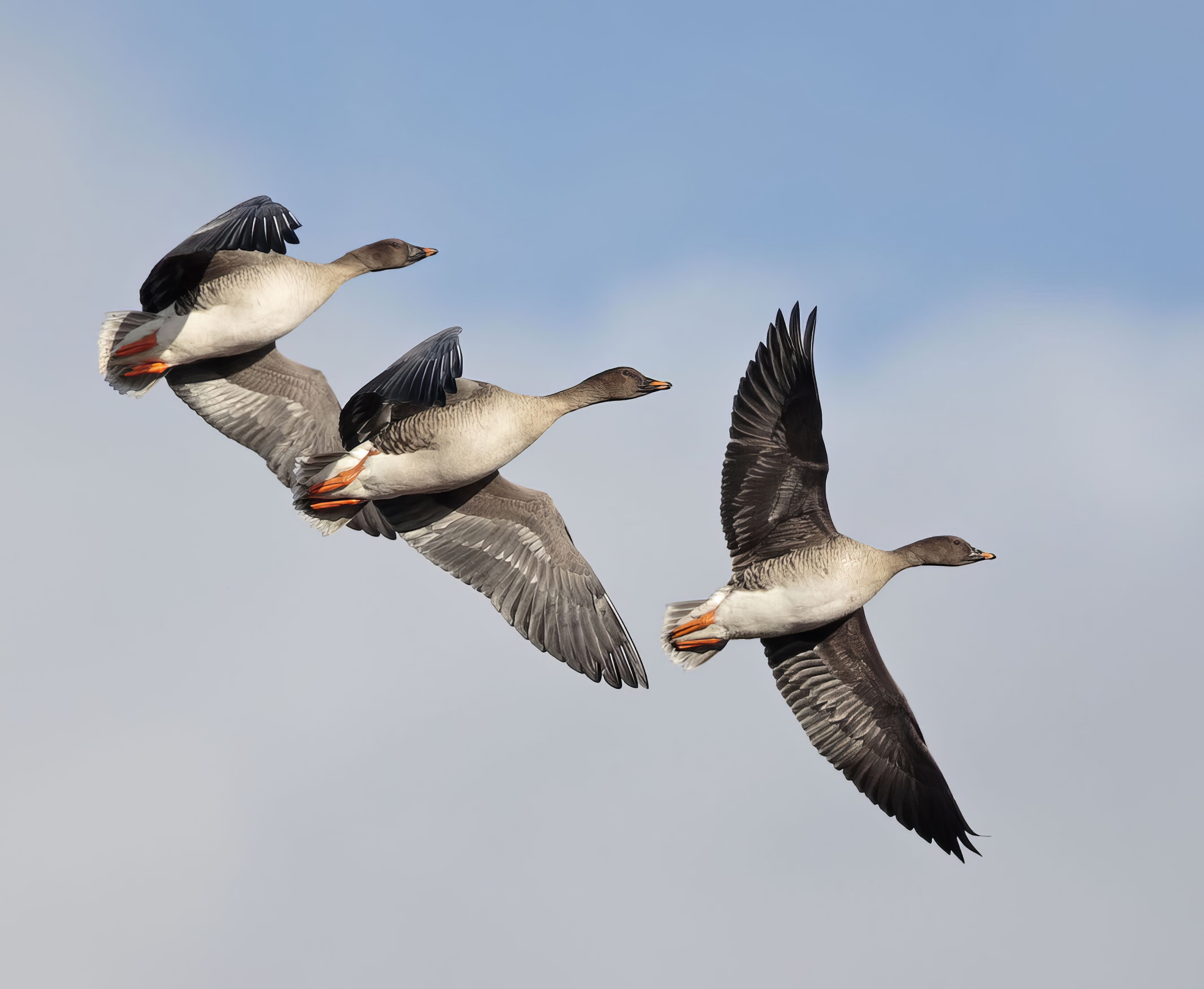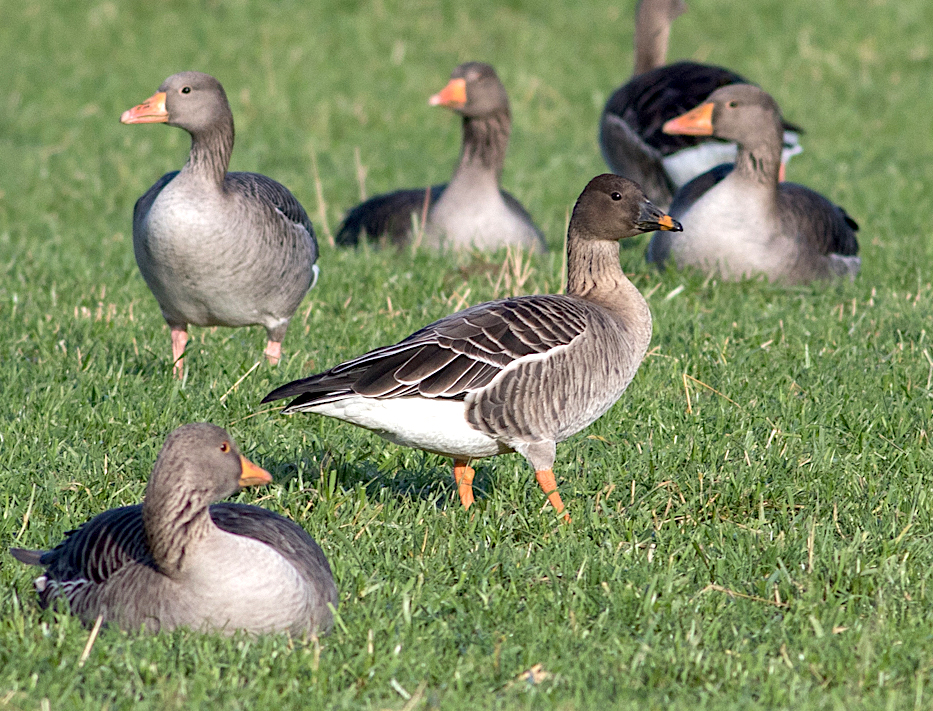Tundra Bean Goose Anser serrirostris
Breeds across the tundra of northern Russia, with small numbers as far west as southern Norway and Svalbard. Winters disjunctly in western and central Europe (A. s. rossicus) and eastern China, Korea, and Japan (A. s. serrirostris). Scarce winter visitor, mainly coastal, in variable numbers.



Tundra Bean Geese: left, Bonby Top December 5th 2011 and centre, south Ferriby March 2nd 2015 (Graham Catley); right, Marston STW November 25th 2018 (Steve Nesbitt).
In 2007, the AOU split Bean Goose, Anser fabalis, into two species. Taiga Bean Goose became Anser fabalis, and Tundra Bean Goose, Anser serrirostris. The IOC followed suit and with the adoption of IOC taxonomy by the BOU in 2017 an extra species appeared on the British List. Lorand and Atkin (1989) noted long before the split that both races as they were then, A.f. fabalis and rossicus, had been identified in the county.
The Atlas notes that in most years of the 1980s and 1990s that there will be around 10 birds at scattered localities, usually on the coast but in years of goose influxes from the near continent there have been many more, e.g. more than 150 in 2011. In most years Tundra Bean Geese turn up from the second week of Oct although occasionally early birds are recorded in Sep. The pattern in the last five years to 2019 has been of small numbers, with occasional flocks of 10 or more. A flock of 12 were on Read’s Island February 27th, 2012 and in 2017 10 or more were present in a mobile flock along the Humber Bank in what was an exceptional year for the species in the county. Most are usually coastal with a few penetrating as far south as The Wash, usually at Gibraltar Point. Frost et al (2019) estimated that around 300 Tundra Bean Geese on average are present in Britain over winter.
Reference
Frost, T.M., Calbrade, N.A., Birtles, G.A., Mellan, H.J., Hall, C., Robinson, A.E., Wotton, S.R., Balmer, D.E, and Austin, G.E. (2020). Waterbirds in the UK 2018/19. The Annual Report of the Wetland Bird Survey. BTO, RSPB and JNCC in association with WWT. British Trust for Ornithology, Thetford.
(Account as per new Birds of Lincolnshire (2021), included September 2022)

